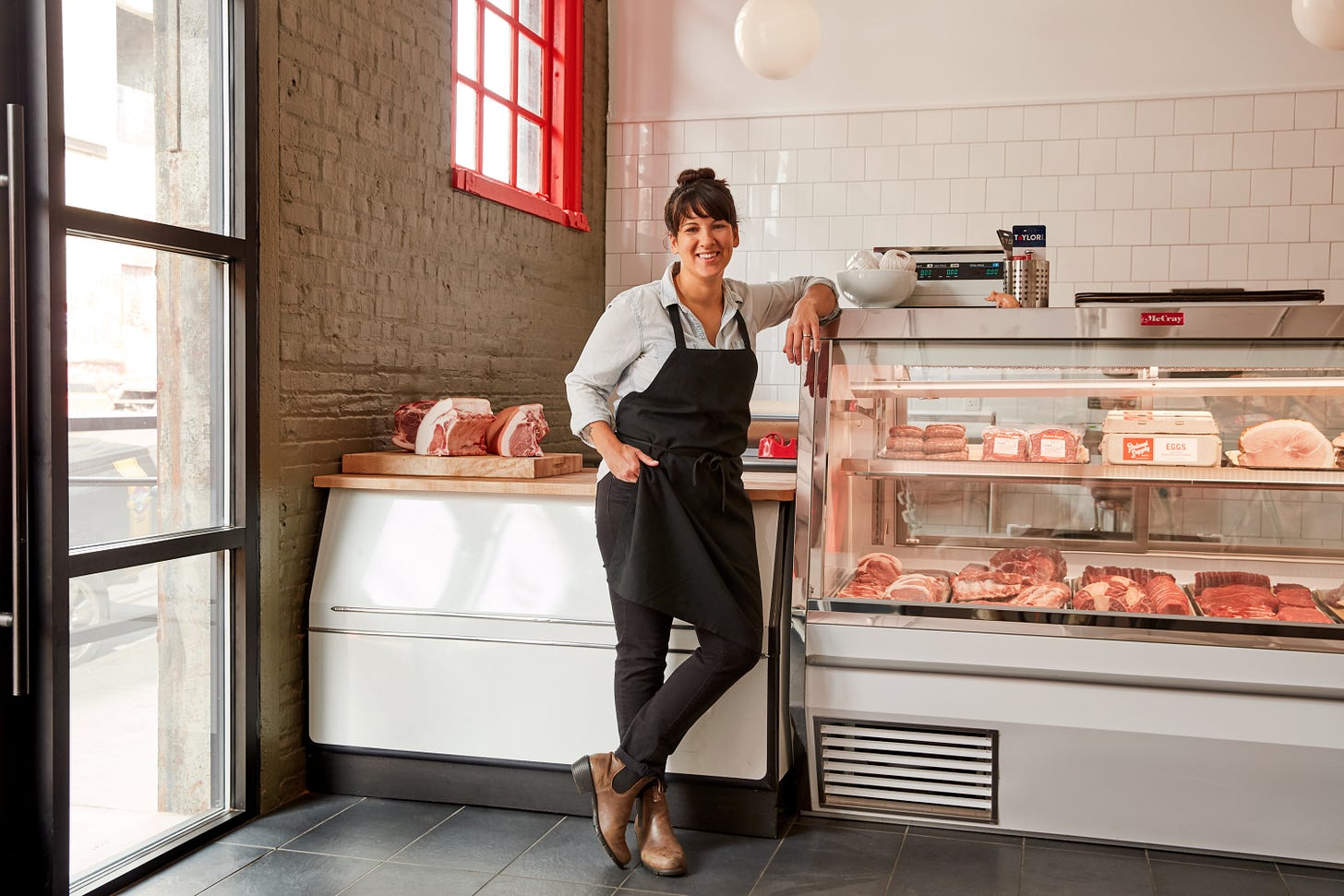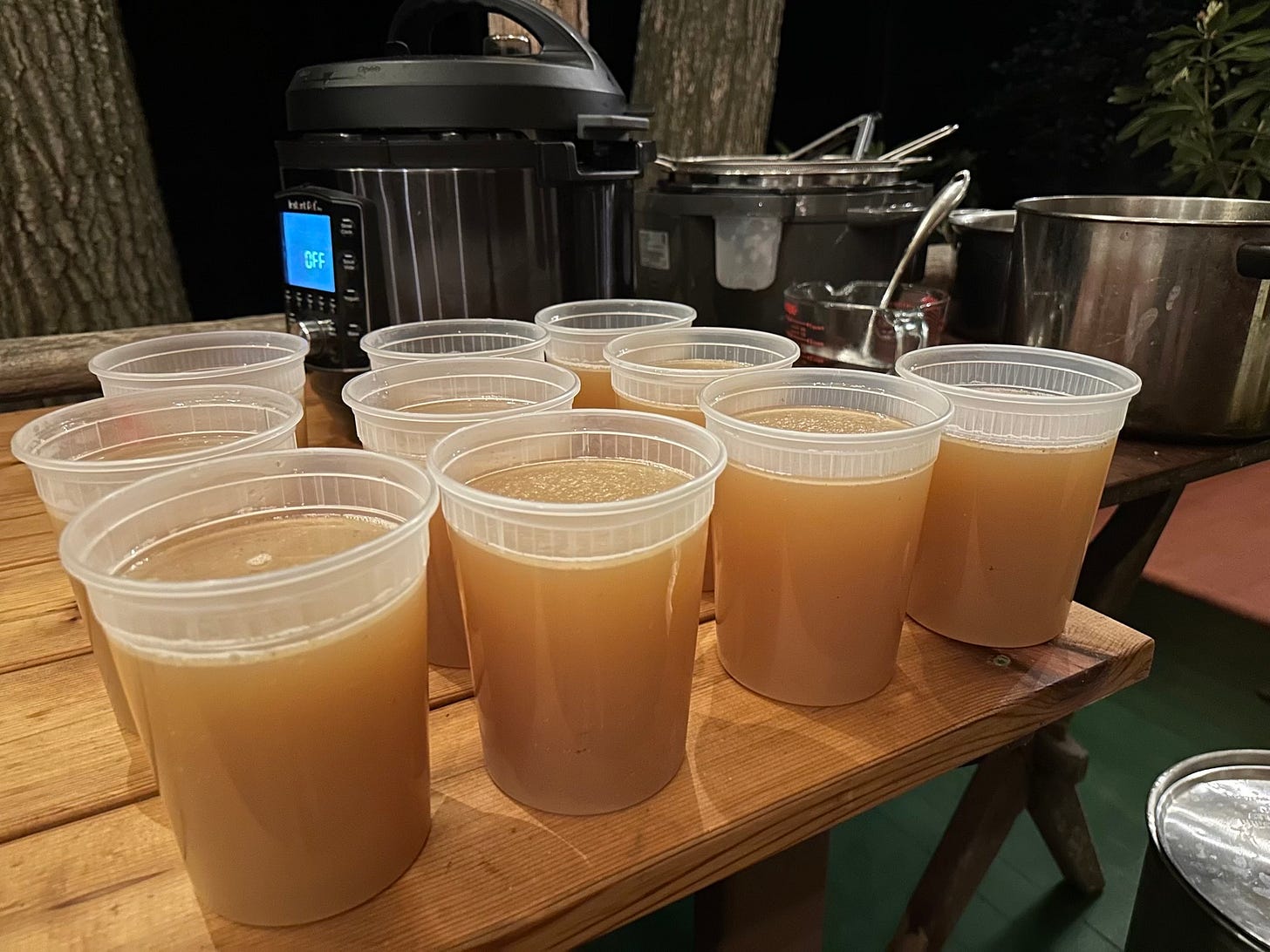My appetite for meat, which was a constant in my life and diet for more than a decade (I was literally referred to as the “meat lady”), has waned considerably since I closed Primal Supply Meats. It’s no longer my job to taste dry-aged steaks for flavor profiles, nor I am motivated to save unsold cuts from the butcher shop grinder by cooking them for dinner. And while I still live by the ethical food standards that prompted me to found my business in the first place, with a chest freezer in my basement perpetually stocked with meat sourced from local farmers who use regenerative practices, I find myself craving it less and less.
Social settings where meat-based meals are served, be it at restaurants or private gatherings, are now something I avoid. It is likely that the proteins on the menu are sourced from industrial feedlot operations, because today in both home and professional kitchens, that is what the majority of cooks in America have access to. Once I was a purveyor who offered an ethical alternative. Now I grapple with disrupting the joy of those gathered around the dinner table if I point out the conflict of the meat offerings with my personal food values. It often feels easier to just opt out.
Having had the first-person experience of raising, harvesting, sourcing, and butchering animals, I’ll never again look at the food on my plate and not consider where it came from.
When my Pocono neighbors recently proposed a community pig roast, for which they planned to source a whole hog from a local farm, I accepted the invitation. This single animal, head to tail, would bring together and feed sixty people, directly supporting a small business in the process. As the event grew closer, it was inevitable that my professional history as a butcher was shared among our community. The plan was that the pig would be delivered an hour before the guests arrived, smoked and ready to serve, and so I allowed myself to be recruited for the role of “carving”.
From the other side of the table piled with pork, where folks lined up and politely conversed as they served themselves from the generous buffet of food that came together, I had a front row seat for the reaction of the eaters to the pig carcass on display. The kids in attendance moved through stages of shock, curiosity, and eventual enjoyment as they found their way to picnic tables with full plates. This might have been their first true encounter with the literal face of their food. One of the adult neighbors made it known that she couldn’t look dinner in the eye, but a few of the more adventurous eaters inquired about cheek meat and what else might be edible from the head.
My own first bite of juicy pulled pork, dressed with a fruity BBQ sauce and a few slices of cucumbers pickled with hot chili peppers was immensely satisfying. My appetite for meat came back to life and I had seconds that evening.
As the party wound down, the trays on the table were picked to mostly bones and pieces of smoked skin. While I helped to clean up, I suggested that we should save what remained to make broth. This idea was first met with some skepticism. To the uninitiated it seemed a difficult task, or worse, like it might result in something unappetizing. But as I insisted that making broth isn’t hard (save for the logistics of where to store a massive pot of bones to keep cold until I could take on the project the following day back in my kitchen), and would result in a key ingredient for potential delicacies such as ramen broth, interest piqued.
Three batches of bones and water through my XL instant pot yielded many quarts of a rich, smoky broth that was so gelatinous it jiggled as a solid mass once it cooled. I stocked containers into the kitchen freezer of one of the community’s shared buildings, and over the next few days encouraged any neighbor I encountered to take a quart home for their own use. If they seemed unsure, I suggested it as an ideal base for a chili or stew.
The night of the roast, I heard my plans for the bones passed like a game of telephone around the communal fire that followed. The phrase that was my reasoning was being repeated by others, “we should not waste anything”. Someday soon, when a quart of broth in my own freezer inspires an entirely new meal, I’ll remember the way my neighbors gathered and honored the life an animal, raised with care by a local farmer, when we shared it as food. With some extra time and care, the odd bits can be the best parts.
LISTEN: Meat and Meaning
, whose Enlightened Omnivore newsletter is a favorite and recommended read of mine, is also a recovering small-business owner. Despite many years of us leading parallel lives as bi-coastal colleagues in the small world of whole-animal butchery, our friendship is new, although it now seems it was always meant to be.“We both started out as marketing professionals before dropping everything to apprentice as butchers. We both had admiration for creating a local, regenerative food system. We started our own businesses in hopes of being part of that solution. And we both closed said businesses within weeks of each other, only to choose writing as the next leg of our life journeys? This kind of synchronicity couldn't be ignored.”
As our relationship evolved from pen pal emails to video chats, Steve invited me to be a guest on his new monthly podcast. Our exchange (which broke into two sessions over many hours due to internet outages from our mutually remote locations, but thankfully Steve is also a skilled editor) took us all the way back to the start of my journey.
Truthfully, in my year of semi-solitude and recovery, I’d forgotten how fun it can be to swap experiences with a peer who “gets it”, even when we compared our decidedly un-fun paths through the pandemic that eventually led to the closure of both of our businesses. I hope you enjoy our conversation as much as I did.

SUPPORT: A Cookbook Shop for Philadelphia
Another new and truly wonderful person in my life is Catie Gainor, the soon-to-be proprietor of Binding Agents, a COOKBOOK SHOP!
I met Catie this past Spring through the Sisterly Love Collective, and a friendship blossomed between us immediately. Not only did we dive deep into our love of both reading and cooking, but I learned on one of our dates as we shared some of our favorite food memories that Catie is the type of friend who will not hesitate to share the whole fish on the menu for lunch. She is a keeper.
If you’re reading this newsletter you know how much I love cookbooks, and I truly cannot wait for Binding Agents to come to life. Situated at 9th and Christian in the Italian Market, just a stone’s throw from Fante’s (an excellent kitchenware shop) and Molly’s (a used book and record store that houses a treasure trove of a vintage cookbook collection), it is sure to be a Philadelphia destination for cooks and eaters alike.
Now just a few months away from opening, Binding Agents launched an Indiegogo campaign to fund the purchase of the opening inventory of cookbooks for the shop. There are some fantastic perks if you’re able to contribute and help make this small-business dream a reality.
WATCH: A Regenerative Movement
To round out the community corner of this newsletter for my local Philly readers, I’ll be moderating a talk with a handful of experts from our regenerative agriculture community following a screening of the new Roots So Deep documentary series this Saturday, August 24th.
The event is at the Colonial Theater in Phoenixville, hosted in partnership with Lundale Farm—a non-profit organization that has grown to over 550 acres, with multiple tenants who are committed to biodynamic methods of farming (and home to some of the best local food folks I know). Perhaps I’ll see you there?
As always, thanks for reading and just being here.
XX,
Heather





